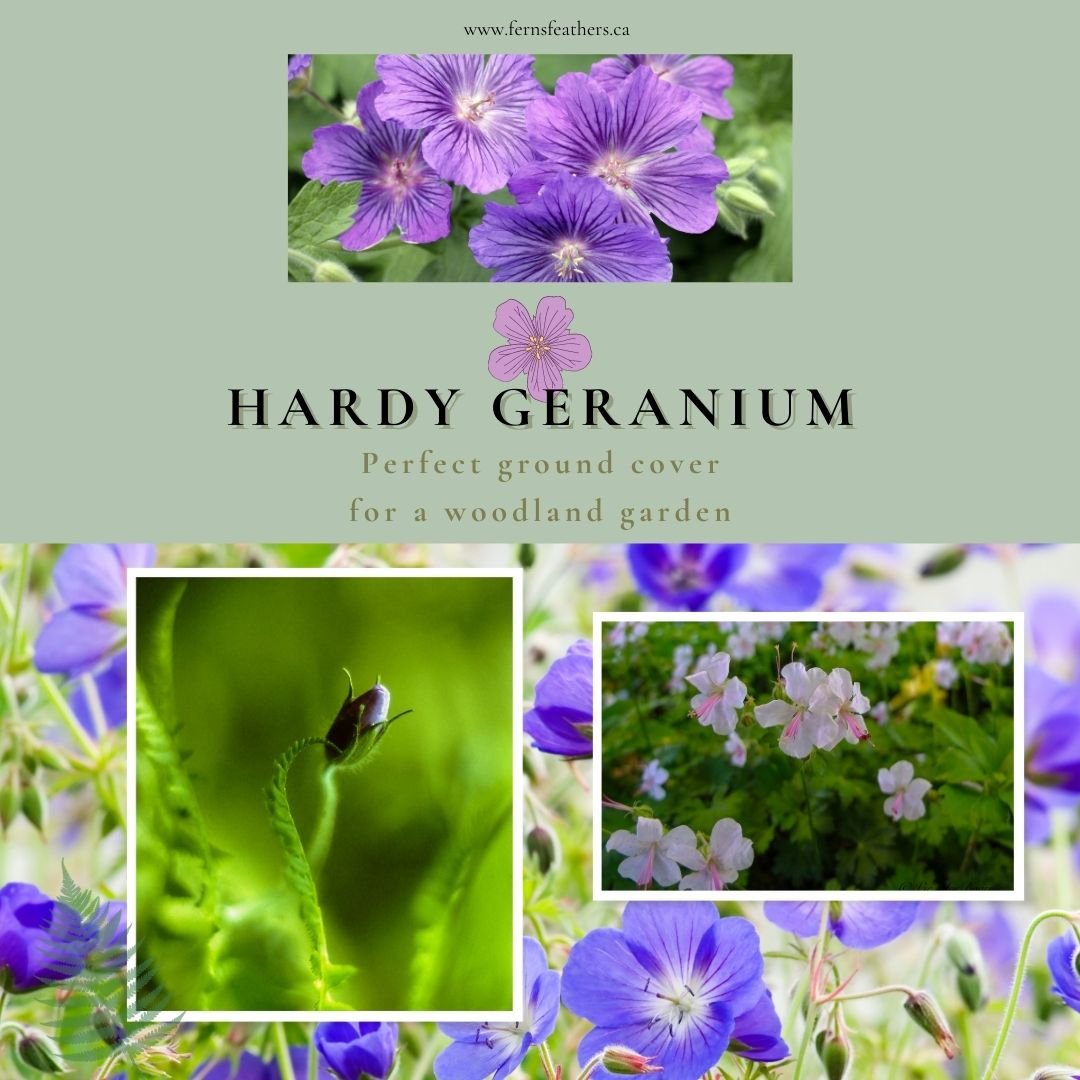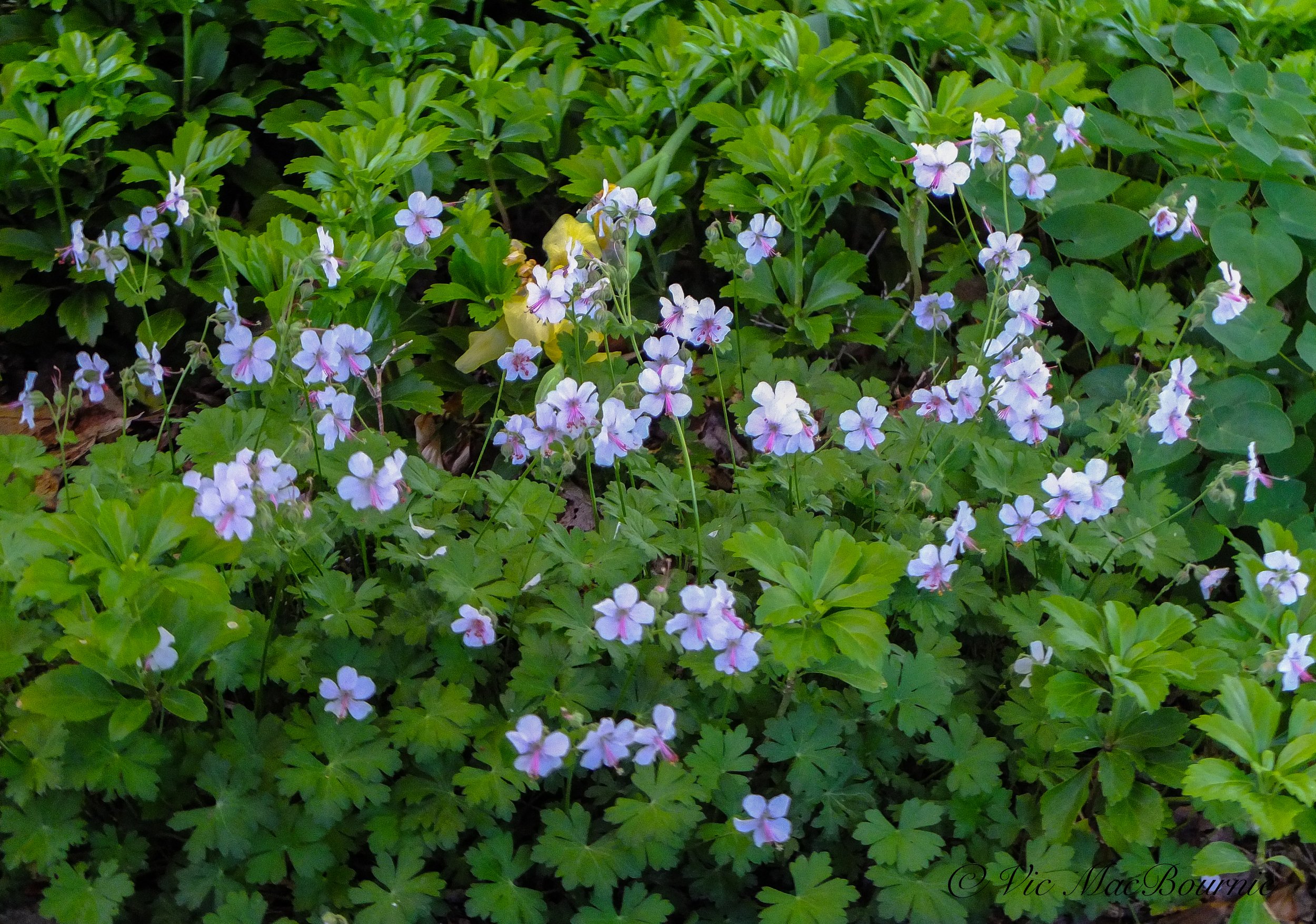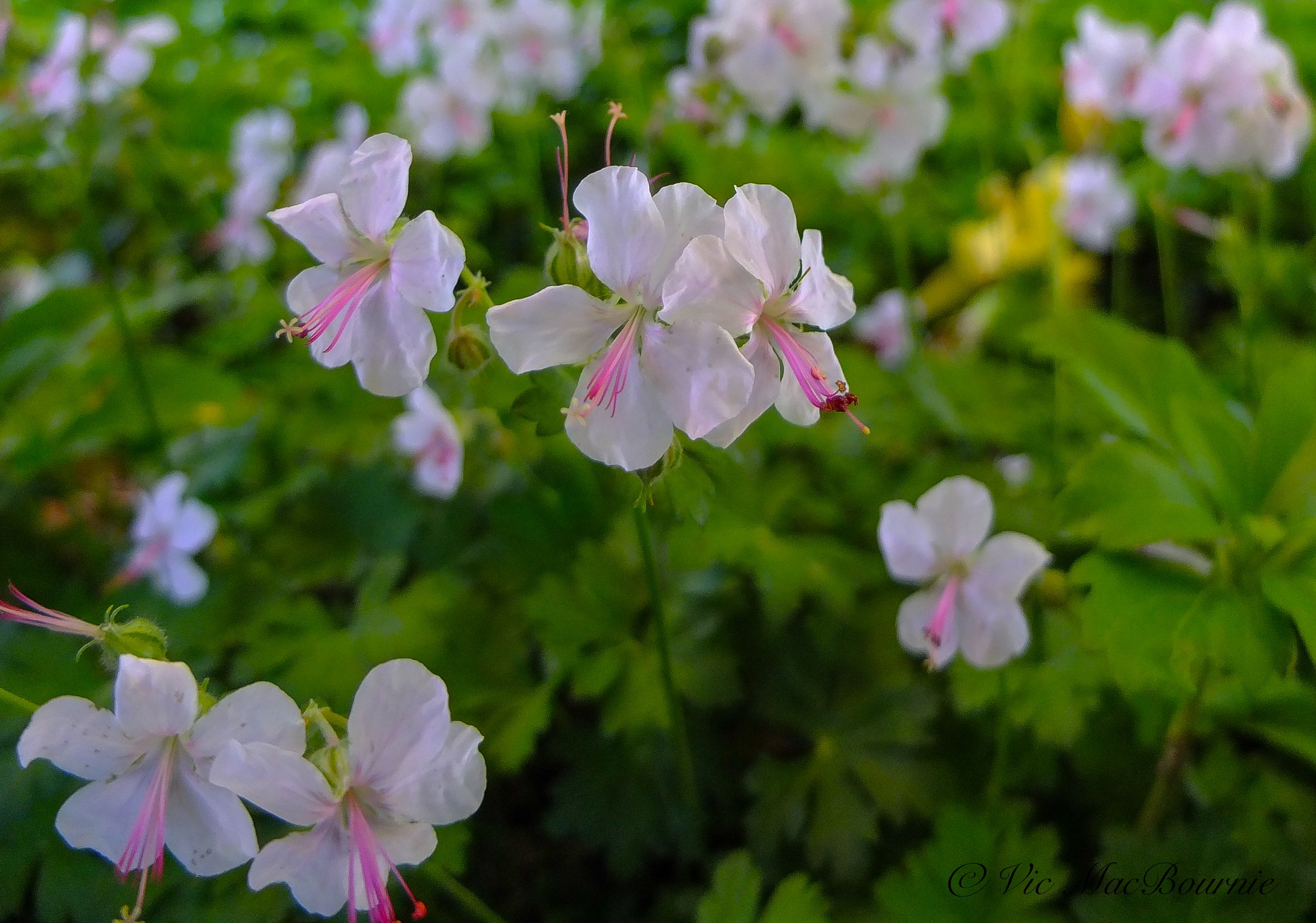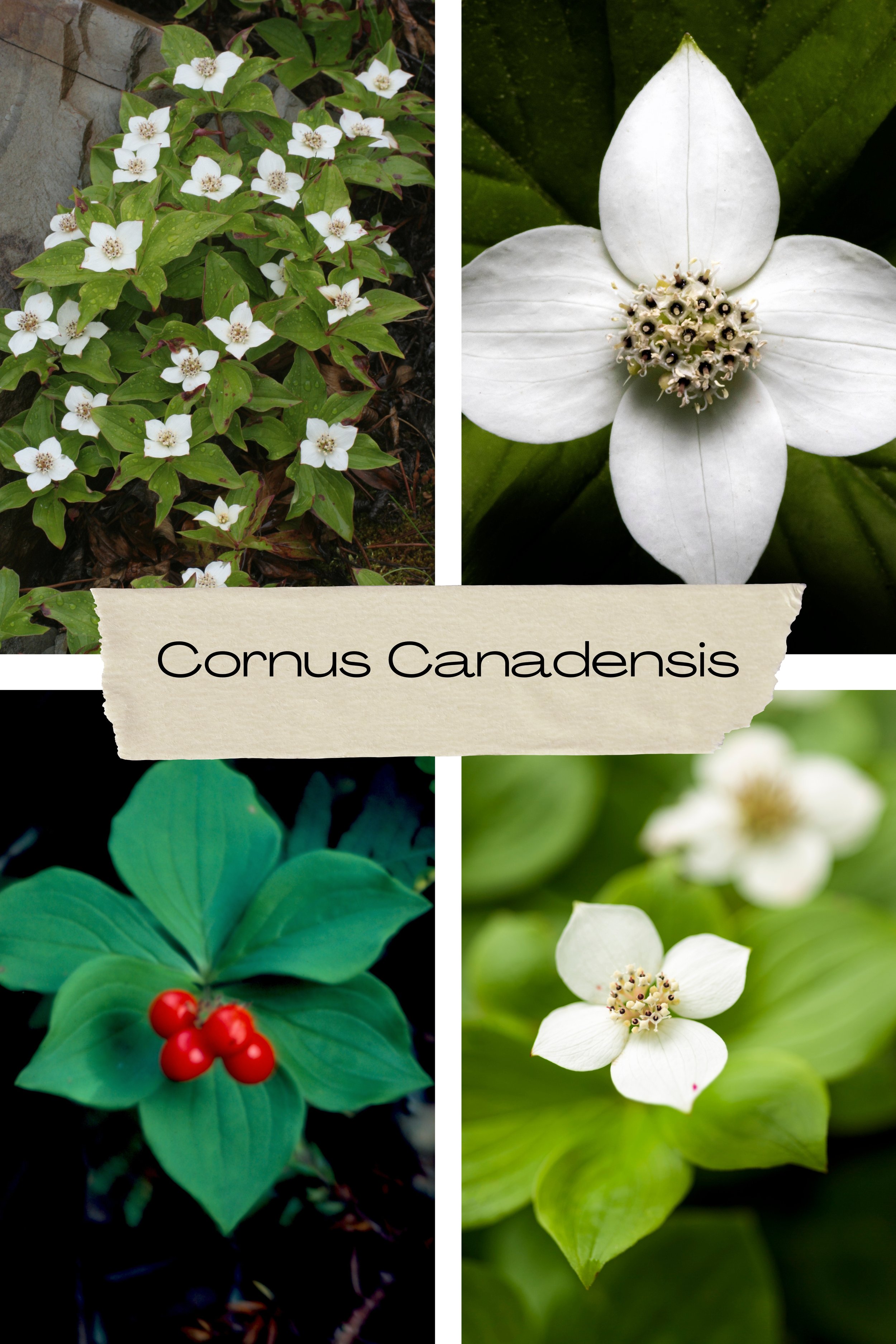Can hardy geraniums be used as a ground cover?
Hardy geraniums or Cranesbill are not like the summer plants we put in containers or plant out in our gardens for the summer months. These are much smaller-flowered perennials that are perfect to use as ground covers.
Hardy geranium: A blue-flowered ground cover for the woodland or shade garden
When most of us think about geraniums, the first thing that comes to mind is the bright red and white lollipops that filled window boxes and containers at our parents’ homes.
These annual geraniums known as pelargonium still have a place in our gardens, but they’re not what we’re talking about when we speak of using geraniums as ground covers. The pelargonium is a long-time favourite non-native summer bedding plant that is not cold and frost hardy.
Hardy geraniums, on the other hand, often referred to as cranesbill geraniums, are hardy perennials that can withstand freezing temperatures and return year after year. The primarily bluish-pink flowering perennials are hardy in zones 4 through 8 and can be grown in a rich woodland soil in the garden or in containers. They are perfect to use as ground covers.
Wild geranium, like the one pictured below, can be hardy down to zone 3.
Native wild geranium is ideal ground cover for the woodland garden
The wild geranium (Geranium maculatum) flowers in spring, with tender pinkish-purple blooms that will attract pollinators to the garden while adding delicate colour.
These native, clump-forming plants in the geranium family (Geraniaceae) can form large dense patches in natural woodland openings. These colonies are formed of groups of long-lived clones that have grown from individual plants, according to the University of Wisconsin-Madison.
Although they can form large dense clumps, I would not consider them overly aggressive. They can spread by underground roots as well as through seed. Plants have a loose cluster of basal leaves and flowering stems arising from thick, branched horizontal rhizomes.
It is an herbaceous perennial native to deciduous woodlands of eastern North America, from southern Ontario south to Georgia and west to eastern Oklahoma and the eastern part of the Dakotas in zones 3 to 8.
Also known as Spotted/Wild Cranesbill, alum root, alum bloom and wood geranium, among others, this plant is an easy-to-manage perennial that prefers medium to wet conditions and tolerates most light conditions. Like the more hybrid cousins, it has unique dissected leaves that turn red and orange in the fall and is hardy from zones 3-7.
Wild geranium is generally the showiest of the native geraniums with larger flowers than the other Cranesbill species.
Being a woodland plant, they prefer a well-drained, fertile and moist soil.
Looking for more information on ground covers? Please check out my other posts on ground covers I use in the woodland garden.
• What is the easiest ground cover to grow?
• Bunchberry perfect ground cover for woodland garden
• Three great ground covers for the woodland garden.
• Creeping thyme as a ground cover
Hybrids offer variety of flower colours, shapes and leaf patterns
Depending on the variety you are growing, hybrid, hardy geraniums can perform well in full sun, partial shade and even in dense shade, but they tend to grow best when they receive early morning and afternoon sun,
Don’t expect showy pom pom flowers, however.
In fact, the flowers of cranesbill geraniums are usually quite small in comparison. Although the flowers are small, they are produced in abundance and can almost cover the plants when they are in full bloom.
Many of the varieties flower over several months throughout the summer into fall and some will even begin flowering in late spring.
In her book Gardening with Hardy Geraniums, (see link below) Birgitte Husted Bentdsen shares her knowledge of cultivating the plants and highlights the most garden worthy species and varieties. Expert cultivation advice, including comments on soil preferences and hardiness, is followed by fascinating information on pollination, and failsafe propagation secrets.
Not unlike most ground covers such as hostas, epimediums and ferns, cranesbill geraniums are all about their foliage, which can be particularly impressive, with their intricate colour blotching, veining and interesting leaf patterns.
These are low-growing plants with a dense carpet-like foliage that makes them ideal to use as ground covers.
I have several clumps, including wild native and hybrid varieties, growing in various parts of our woodland/shade garden where their roots slowly spread out over time forming large, attractive ground covers.
The native cranesbill can be found on our forest and woodland floors growing in moist woodsy soils.
The popularity of hardy geraniums can be seen in the large variety that are available. With new ones coming available regularly, there are 70 species and 700 varieties available.
What pollinators are attracted to cranesbill
The importance of native cranesbill to our gardens is evident by the pollinators that are regular visitors. Besides non-native honeybees, bumblebees, a variety of native solitary bees, and syrphid flies are common pollinators to the flowers. In addition, various types of ants and beetles also pollinate the flowers.
How can I keep my cranesbill flowering
We grow cranesbill as a ground cover for its dense foliage and abundance of flowers. You can expect an ultimate height of between 5-36 inches (13-90cm) depending on the variety.
To ensure a tidier and thick foliage as well as lots of flowers, be sure to remove the flower stems after they have finished flowering to prevent them from going to seed.
The plant itself will continue to spread by underground rhizomes. So, unless you are looking to substantially increase the number of plants in a given area, consider removing spent flowers for continuous bloom.
How to care for hardy geraniums
These easy-to-care-for perennials are considered low maintenance plants that, once established, only need to be watered during prolonged dry periods. Mulching the plants in spring will help to create that woodsy soil and prevent excessive moisture loss throughout the summer.
Give the plants a shearing after the first flush of flowering to keep the plants looking their best and to encourage more flowers.
Can hardy geraniums be divided?
The hardy geraniums will grow large over time, with an ultimate spread of between 5-36 inches (13-90cm). Larger clumps can be divided every 3 to 5 years by cutting them in half or quarters in spring or fall.
Consider dividing them in the spring and using the divisions in containers during the summer where they can be properly cared for and enjoyed. Later in the fall, you can plant the healthy specimens back into the garden.
Bunchberry is the ideal woodland ground cover
Bunchberry or Cornus Canadensis is the perfect ground cover for the woodland garden. It is happy in a moist, acidic soil growing in a coniferous or mixed forest. The small, ground-hugging dogwood looks great in spring summer and fall complete with perfect little flowers and bunches of bright red berries.
Cornus Canadensis has a place in every woodland garden
I’m not sure when I fell in love with Dogwood, but one look at the garden in spring and there is no denying that dogwoods take centre stage in our woodland garden.
Several Flowering dogwoods (Cornus Florida), a couple of magnificent Kousa dogwoods (Cornus Kousa), and a lovely Cornus Mas or Cornelian Cherry bloom along with Redbuds and Serviceberry in a delicate display of pinks, reds and airy white-flowering trees.
There is one, however, critical dogwood species (members of the Cornaceae family) that has been missing in action in our garden and that is Bunchberry.
Bunchberry is a stunning native Woodland ground cover
Bunchberry (Cornus Canadensis) is the perfect ground cover in the moist woodland garden, whether in late spring to early summer when its attractive white bracts and greenish to purplish flowers are in full bloom against shiny green leaves, or later in summer and fall with its stark red cluster of berries and more muted purple to red leaf colour brings the woodland floor to life in a riot of colour and texture.
We know that most dogwoods are small trees or shrubs, but this plant is a low, creeping perennial that grows mostly in moist coniferous to mixed forests, clearings and boggy areas. Bunchberry can have 4 to 7 leaves, though it typically sports six in a terminal whorl with one to two leafy bracts below those leaves.
The semi-evergreen, 2-8 centimetre long leaves, like most dogwoods, have prominent parallel veins. The white flowers are, in reality, a set of four white bracts surrounding a tight pincushion of tiny greenish-white to purplish flowerlets in an umbel cluster.
Looking for more information on ground covers? Please check out my other posts on ground covers I use in the woodland garden.
• What is the easiest ground cover to grow?
• Three great ground covers for the woodland garden.
• Creeping thyme as a ground cover
• Snow in summer ideal for hot dry areas
• Moss and moss-like ground covers
When do Bunchberry flower and set fruit?
If you have never seen this often over looked native ground cover, think of the beauty of a flowering dogwood tree growing just a couple of inches off the ground in large, spreading flowering mats complete with its showy flowering bracts that bloom in late spring through early summer depending on growing conditions.
The impressive bracts and flowers are followed by bright red bunches of fruit in late summer and fall, which is where Bunchberry obviously got its name.
That’s, in essence, what the bunchberry provides gardeners. Not to mention its inherent benefits to local wildlife, including birds, mammals, butterflies, insects and bees.
Can you ask for more in a native ground cover?
For more on using Bunchberry as a groundcover, check out this Pacific Northwest landscaping plan that uses bunchberry.
In fact, according to the highly informative site Tale of the Dogwood: “The flowering shoots (of Bunchberry) often cover large areas with up to 300 flowering shoots per square meter. With an average of 22 flowers per shoot, bunchberry often has 6,600 flowers in one square meter. (10-11 square feet).”
More of my posts on Dogwoods
For more information on Dogwoods, please check out my other posts listed here:
Dogwoods: Find the perfect one for your yard
Flowering Dogwood: Queen of the Woodland garden
Cornus Kousa: Impressive non-native for the woodland garden
Pagoda Dogwood: Small native tree ideal for any garden
Cornus Mas: An elegant addition to the Woodland Garden
Why do Bunchberry flowers explode?
And if that’s not exciting enough, the flowers have been known to “explode” when a certain size insect lands on them.
Tale of the Dogwood explains that: “Exploding flowers may enhance insect pollination in two ways. First, exploding flowers limits pollinators to those insects that are heavy enough to trigger open the flowers. Large insects readily move between inflorescences whereas smaller insects (e.g., ants and small flies) are ineffective pollinators because they rarely move between inflorescences. Second, most of the large insects are voracious pollen eaters. The explosive flowering disperses the pollen over the body of the insects and imbeds it deep in their hairs where it is hard for them to gather it to eat.”
Even if a full understanding of the whole explosive nature of the flowers is of little interest, You have to admit that it’s pretty cool to have thousands of exploding flowers in your backyard!
I’m proud to say that this impressive ground cover is no longer absent in my garden. Thanks to Ontario Native Plants, I purchased a number of Bunchberry plugs late last summer and got them into the ground in time to get them started.
The plugs of this lovely woodland ground cover were planted in our shady side yard on a slight slope among the wild violets, and I am looking forward to seeing how they come through our difficult winter and begin putting down roots this growing season.
How to plant bunchberries
I planted the bunchberries in a shady area of the yard near some young pines a spruce tree and under a maple. I added a little acidifier to the planting holes and topped them with some pine needles. In spring I’ll sprinkle a little more acidifier on the soil and add more pine and spruce needles to help maintain a slightly acid growing medium.
They will be growing amid wild violets and I’m hoping to add some maindenhair ferns to complement the low-growing ground cover.
A couple years back, I tried to get three clumps of bunchberry started, but after moving them to different parts of the garden, (I must stop movng plants around every spring) the plants just disappeared. I’m not sure if they died as a result of my moving them around or improper growing conditions. Although these plants are farely common in nature, they do require specific growing conditions to be their best.
I have no plans to move these new plants, and hope that they will feel at home in the mostly shady, damp soil.
These slow-growing herbaceous perennials grow to between 10-20 cm (3-8 inches) in height as they form large clonal colonies in carpet-like mats of green leaves that, in the fall, turn a beautiful shade of red to compliment their red-tinted veins.
When does Bunchberry fruit and is it edible
Flowers appear in late spring from May through to July followed by fruit that can appear from late July into October. The berries are edible but are best left for the birds and other garden wildlife that depend on the berries to help get them through tough winters.
The drupes (fruit) start off green, turning a bright red as the clusters mature throughout the summer. Each fruit is about 5mm in diameter and contain one or two ellipsoid-ovoid shaped stones which can be planted as a method of propagation.
Where does Bunchberry grow?
Given that Bunchberry is a tough perennial ground cover found in low, almost sub- to sub-alpine areas, in most parts of Canada and the northern United States including Colorado and New Mexico all the way to Greenland, I’m confident these young plants will come through winter raring to set roots come spring.
Bunchberry’s vigour is also evident considering it’s native to Japan, North Korea, northeastern China and parts of Russia. Those countries offer pretty extreme conditions for this lovely little ground cover to call home.
Soil conditions for growing Bunchberry
They grow in poor to medium soil that can be moderately-dry to wet, but they prefer a moist, acidic soil.
Cornus canadensis likes cool, moist soils to prosper. It grows in montane and boreal coniferous forests, where it is often found growing along the margins of moist woods, preferably among cedars and on old tree stumps, in mossy areas, and among other open and moist habitats.
Try growing Bunchberry in an old tree stump
Here is an idea readers might want to trying this summer. I plan to get an old hollowed out tree stump, fill it with a rich, acidic soil and plant a bunchberry into the rotting tree stump. I’m hoping to possibly use it as a small breeding ground for additional plants that spread by rhizone.
Are Bunchberries edible or poisonous?
You may be wondering if the bright red berries of the Bunchberry are poisonous – they are not poisonous. In fact, because they are hard and a little bitter they are best left for birds and other wildlife.
The showy red, fleshy fruit turns bright red in summer and enjoyed by a host of birds and other wildlife. The seeds are mostly dispersed by birds who are often found feeding on the fruit during their fall migration. But it is also a food source for deer and moose, bears and hares as well as smaller garden wildlife species.
According to the website Adirondacks Forever Wild: Bunchberry is also used by some song and game birds. The fruits are eaten by Veeries, Ruffed Grouse, Partridge, Philadelphia and solitary Vireos, Warbling Vireos and White-throated Sparrows.”
Bunchberry flowers also attract butterflies but do not attract deer or rabbits. Deer will eat Bunchberry foliage but it is not one of their preferred food sources.
Bunchberry fruits are eaten by black bears (if they are part of your garden guests) and small mammals including chipmunks, cottontails, martens and Snowshoe Hares.
Western or Alaskan bunchberry is also a showstopper
Often mistaken for Cornus Canadensis, Cornus Unalaschkensis (western cordileran bunchberry or Alaskan bunchberry) is another stunning carpeting woodlander.
In the the informative, Gardening with Native Plants of the Pacific Northwest, authors Arthur R. Kruckeberg, and Linda Chalker-Scott describes Western buncherry as “a 6-inch-high circle of broad leaves supports a single dogwood “bloom,” a singular pattern often repeated in great swaths on the forest floor.”
They go on to explain that the “English rock gardener Reginald Farrer speaks highly of the North American species calling it much superior in showiness to the European C. suecica.”
What to plant along with the bunchberry
The authors advise that the: “dwarf dogwood should be given preeminent placing in shaded portions of the garden, under azaleas or vine maple. They like an acid, gritty soil, somewhat damp for most of the year.”
In conclusion
Woodland gardeners who are lucky enough to be able to grow dogwoods, know that you can never have enough of these important family of shrubs and understory trees. Add to this, the magnificent, carpeting qualities of the Cornus Canadensis and its western and european counterparts. These are a must for any woodland gardener.
Plant them in already-growing mats or clumps and let the rhizomes run, or get some seed and plant them in acidic damp soil to establish your own patch of this perfect, woodland ground cover.







